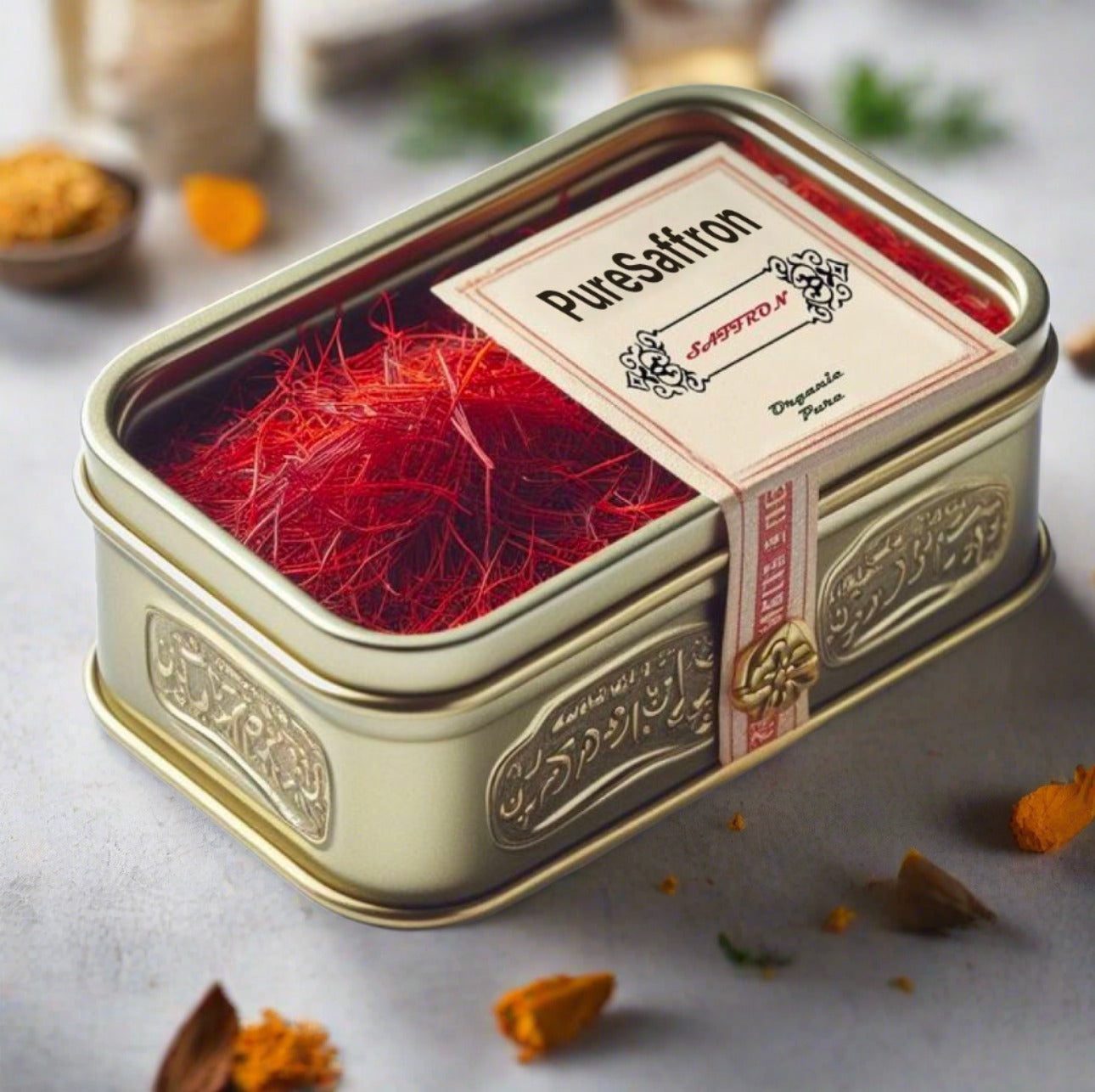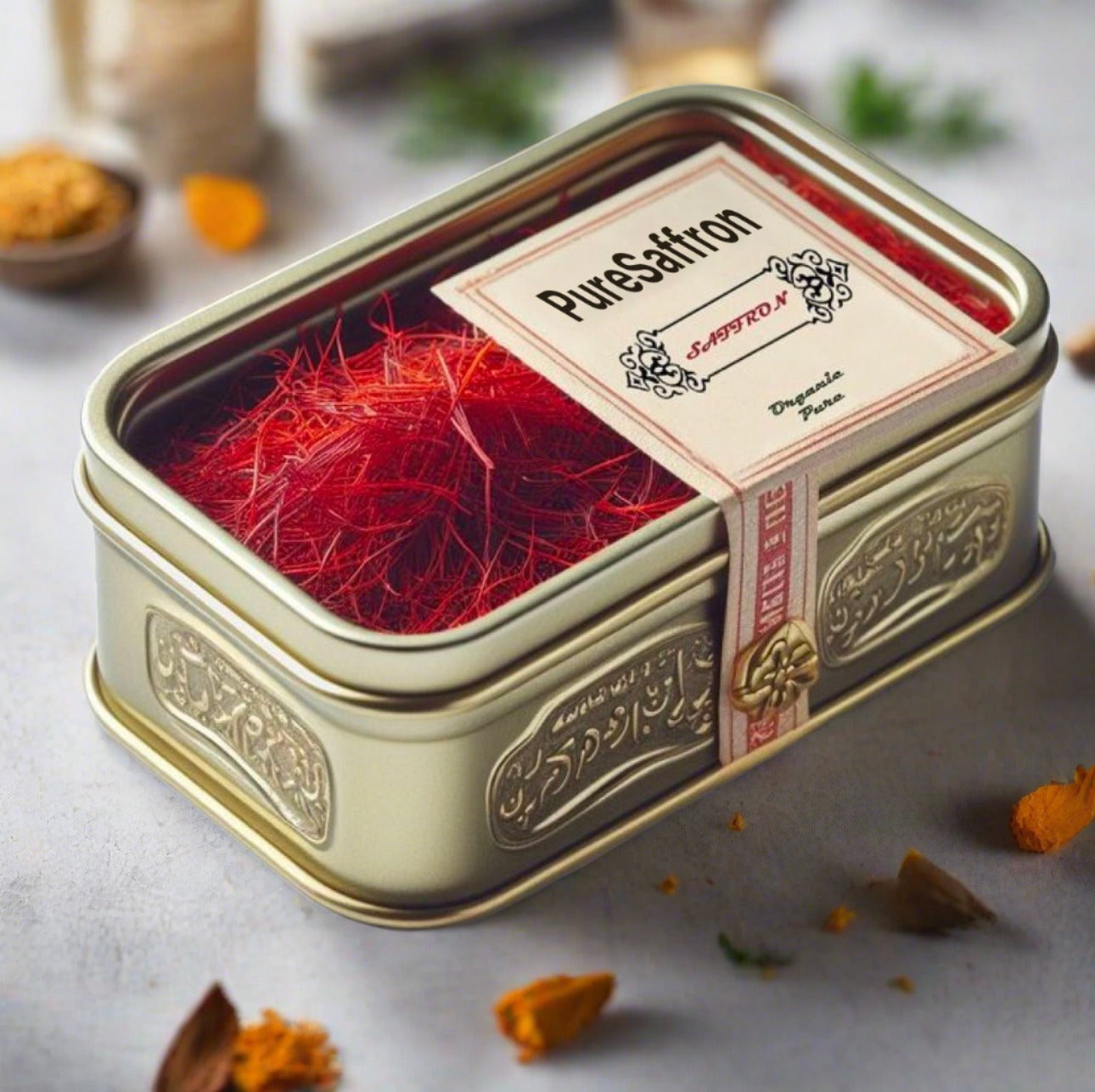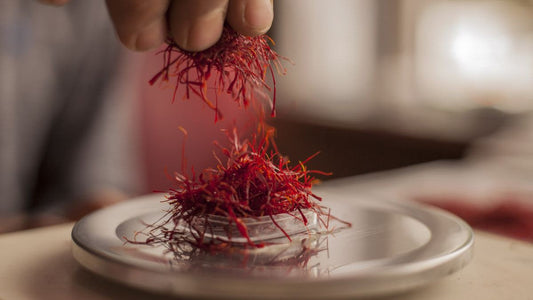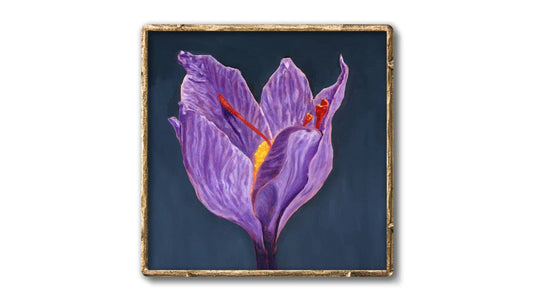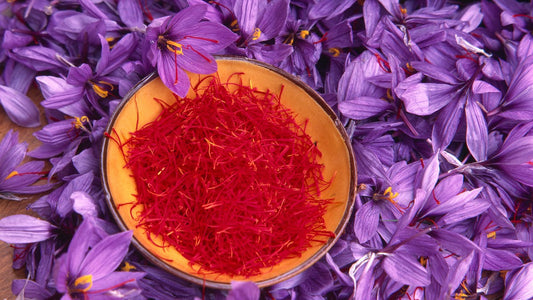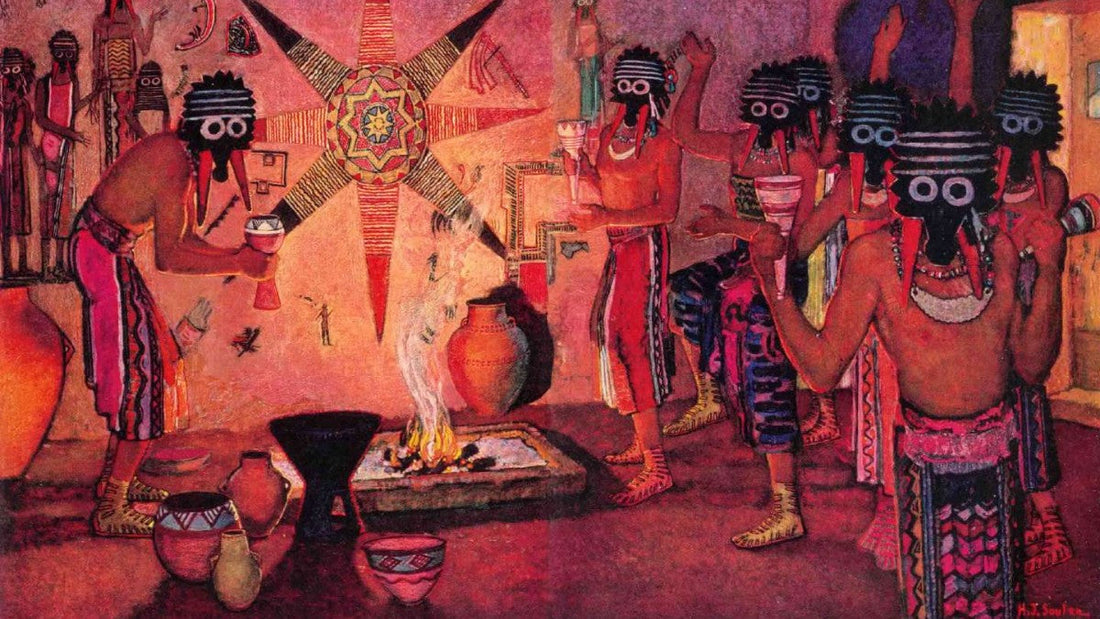
Saffron in Ancient Medicine: Uses, Benefits, and Historical Insights
Ara OhanianShare
The Role of Saffron in Ancient Medicine
Saffron, often referred to as the "golden spice," has played a significant role in ancient medicine for centuries. Derived from the Crocus sativus flower, saffron’s vibrant red threads were not only prized for their culinary value but also for their remarkable healing properties. In cultures across the globe, saffron was celebrated as a powerful remedy for various ailments, solidifying its place in the annals of traditional medicine.
From the pages of ancient Ayurvedic texts in India to the works of Hippocrates in Greece, saffron has been hailed as a versatile and effective medicinal agent. Let’s dive into the history, uses, and benefits of saffron in ancient medicine to uncover why this spice continues to captivate the world.
Saffron in Ayurvedic Medicine
In the ancient Indian system of Ayurveda, saffron was considered a tridoshic spice, meaning it could balance all three doshas: Vata, Pitta, and Kapha. Ayurvedic practitioners used saffron to treat a variety of health issues, including:
- Skin disorders: Saffron was often included in herbal formulations to enhance skin complexion, reduce pigmentation, and treat acne.
- Digestive issues: It was believed to stimulate digestion and alleviate gastrointestinal discomfort.
- Respiratory problems: Saffron was used as a remedy for asthma, colds, and coughs due to its anti-inflammatory properties.
- Reproductive health: Ayurvedic texts mention saffron as an aphrodisiac and a remedy for menstrual irregularities.
The holistic approach of Ayurveda made saffron a staple in many healing practices, emphasizing its role in promoting overall well-being.
Saffron in Traditional Chinese Medicine (TCM)
Saffron also held a revered place in Traditional Chinese Medicine (TCM). Known as "Hong Hua" in Mandarin, saffron was used primarily to invigorate the blood and remove stagnation. It was believed to support the cardiovascular system and improve circulation.
Some of the key uses of saffron in TCM include:
- Alleviating pain caused by blood stagnation.
- Calming the mind and treating emotional disturbances such as anxiety and depression.
- Supporting liver health and detoxification.
- Enhancing the healing process for wounds and injuries.
In TCM, saffron was often combined with other herbs to create synergistic effects, making it a valuable component of many traditional remedies.
Saffron in Ancient Greek and Roman Medicine
The ancient Greeks and Romans were no strangers to the benefits of saffron. Hippocrates, the "Father of Medicine," documented its use for treating a variety of ailments, including digestive disorders, colds, and insomnia. Similarly, Dioscorides, a Greek physician and botanist, highlighted saffron’s anti-inflammatory and pain-relieving properties.
Some of the notable uses of saffron in these ancient civilizations included:
- Relieving pain: Saffron was used as an analgesic to treat headaches and menstrual cramps.
- Supporting mental health: It was believed to uplift the mood and combat melancholy.
- Improving respiratory health: Saffron was used to treat asthma and bronchitis.
- Enhancing vision: Ancient texts mention saffron as a remedy for eye conditions and to improve eyesight.
The Greeks and Romans also valued saffron for its aromatic properties, often using it in perfumes and as a dye for fabrics.
Saffron in Persian Medicine
Persian medicine, another cornerstone of ancient healing practices, extensively utilized saffron for its therapeutic benefits. Persian scholars like Avicenna (Ibn Sina) praised saffron for its ability to treat depression, improve digestion, and enhance cardiovascular health.
In Persian medicine, saffron was often used to:
- Boost energy and vitality.
- Enhance mood and reduce stress.
- Promote liver and kidney health.
- Improve skin appearance and treat wounds.
Even today, Persian saffron is considered among the finest in the world, reflecting its rich history and cultural significance.
Modern Relevance of Saffron's Ancient Uses
While modern medicine has evolved significantly, many of the ancient uses of saffron remain relevant today. Scientific studies have validated several of saffron’s traditional benefits, including its antidepressant, anti-inflammatory, and antioxidant properties.
With its rich history in ancient medicine and growing evidence supporting its health benefits, saffron continues to be a sought-after spice for both culinary and medicinal purposes. If you're looking to incorporate this golden spice into your life, consider exploring our premium collection of saffron products. Check out our Persian Pure Saffron for the finest quality saffron available.
FAQs About Saffron in Ancient Medicine
-
Q: What ailments was saffron commonly used to treat in ancient medicine?
A: Saffron was used to treat a wide range of ailments, including digestive issues, respiratory problems, skin disorders, mental health conditions, and menstrual irregularities.
-
Q: How did ancient cultures source saffron?
A: Saffron was painstakingly harvested by hand from the stigmas of Crocus sativus flowers. This labor-intensive process made it a highly prized and expensive spice.
-
Q: Is saffron still used in traditional medicine today?
A: Yes, saffron is still used in traditional medicine systems like Ayurveda and Traditional Chinese Medicine, as well as in modern herbal remedies.
-
Q: What makes saffron effective in ancient medicine?
A: Saffron’s effectiveness is attributed to its bioactive compounds like crocin, safranal, and picrocrocin, which offer antioxidant, anti-inflammatory, and mood-enhancing properties.
-
Q: Where can I buy high-quality saffron?
A: You can purchase top-quality saffron from trusted sources like our Persian Pure Saffron, which offers premium-grade saffron for culinary and medicinal use.
